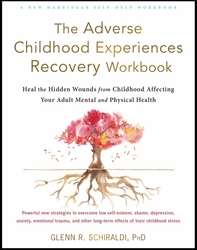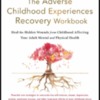Glenn R. Schiraldi, Ph.D. Psychology Today blog post, May 1, 2023
This post is part of a series on adverse childhood experiences. Read the other parts here.
Shame resulting from Adverse Childhood Experiences (ACEs) and attachment disruptions imprints in the brain in the earliest months of life. Because the logical, verbal left-brain is not sufficiently developed, shame lodges in the non-verbal right brain, with its strong connection to the emotional and survival brain. Shame, then, registers primarily not as words, but as a felt sense—dread, self-contempt, physical sensations, and images—largely beneath conscious awareness. Our usual attempts at coping do not touch this deeply rooted shame. Attempts to fight shame with thinking or to escape or cover shame with addictions or other distractions do not fundamentally change shame. A mindful approach offers a different way to soothe shame.
The principle of reconsolidation says that bringing the various aspects of a disturbing memory to awareness gives the brain a chance to change the memory. In this case, shameful memory material is changed by infusing compassion into the memory. Here’s how this works. (If at any point, this feels overwhelming, stop and seek the help of a skilled mental health professional.)
The Mindful Approach
Sit or lie comfortably where you won’t be disturbed for at least 20 minutes. Rest in your breath to calm your body. Imagine compassion (sometimes called loving kindness, gentle friendliness, or soothing love) entering your body with every in-breath. Allow your body and brain to settle.
With full acceptance and without judging, notice how you experience shame. Make a space to fully and kindly feel it. Whatever you feel is okay; let yourself feel it. Notice where in your body you feel it—perhaps your belly, your chest, your throat, or your head. Whatever you feel, just hold that in kind awareness, like you would hold a suffering child until the suffering subsides. Take your time.
Similarly, notice the emotions that shame brings up. Simply hold them in a kind embrace and let compassion soothe those emotions. There’s no rush. Simply bring those emotions, held in dark secretiveness for so long, into the light where they may be soothed with lovingkindness. Keep embracing these emotions with compassion for as long as it takes. Notice where in the body you experience these emotions and soothe that area with lovingkindness.
Do any thoughts (such as “I’m no good”) or images (such as slumped posture) arise? Hold these with a friendly, kind open heart. Be aware of any emotions or bodily sensations that these thoughts or images stir up and soothe these with great compassion on each in-breath.
For whatever comes up, keep reminding yourself, “Whatever I feel is okay. Let me feel it.” Keep holding your pain like you would your beloved child—in a kind, soothing embrace, knowing that it is compassion that heals and soothes inner wounds. Again, take your time.
When finished, track your body and emotions. Perhaps your notice subtle but tangible shifts—more peace; more connection to your body, your feelings, your true self; and so forth.
Conclusion
We can’t change what happened in the past. But we can change our response to what happened. This is what mindfulness does. With practice, we get better at responding with compassion, rather than fighting our pain and creating more tension.
If this approach has been useful, consider practicing it often. Repetition of positive experiences rewires the brain, imprinting new neutral pathways that can lift the mood and change the way we experience shame.
Note: The mindful approach can be very useful for shame imprinted at any stage of life. Once the verbal, thinking left-brain is fully developed, it goes “off line” during periods of overwhelming stress. It’s as though the brain shuts it down during crises when the overriding need is to fight or flee, not speak or reason. During these periods, shame can accumulate, either from mistreatment by others or through our own actions that we regret. Shame from these experiences is again likely to lodge in the non-verbal right brain and be relatively unresponsive to attempts to think our way out of shame. Here’s where mindfulness can help.
Reference
Schiraldi, G. R. (2021). The Adverse Childhood Experiences Recovery Workbook: Heal the Hidden Wounds from Childhood Affecting Your Adult Mental and Physical Health. Oakland, CA: New Harbinger Publications.
About the Author
Glenn R. Schiraldi, PhD, has served on the stress management faculties at The Pentagon, the International Critical Incident Stress Foundation, and the University of Maryland, where he received the Outstanding Teacher Award in addition to other teaching/service awards. His fourteen books on stress-related topics have been translated into seventeen languages, and include The Adverse Childhood Experiences Recovery Workbook, The Self-Esteem Workbook. The Resilience Workbook, and The Post-Traumatic Stress Disorder Sourcebook. The founder of Resilience Training International (www.ResilienceFirst.com), he has trained laypersons, emergency responders, and clinicians around the world on the diverse aspects of stress, trauma, and resilience.
Title image credit: fizkes/istockphoto



Comments (0)